Vacations
 Short intro here.
Short intro here.
Rome

Summary of time in Rome here.
San Gimignano
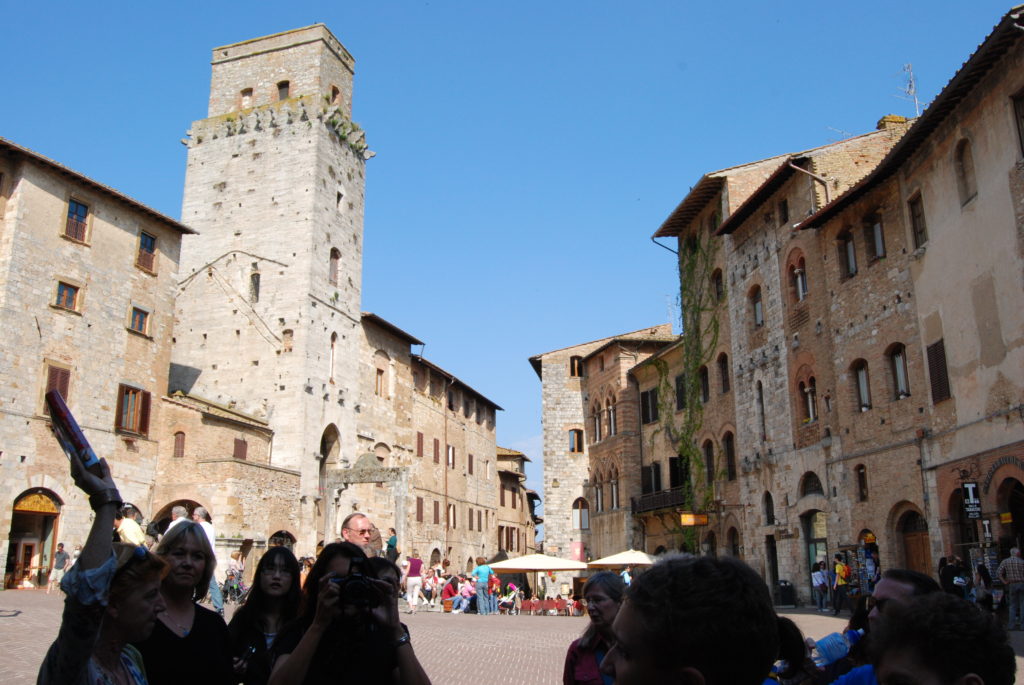
Summary of time in San Gimignano here.
Florence

Summary of time in Florence here.
Verona

Summary of time in Verona here.
Venice

Summary of time in Venice here.
Assisi
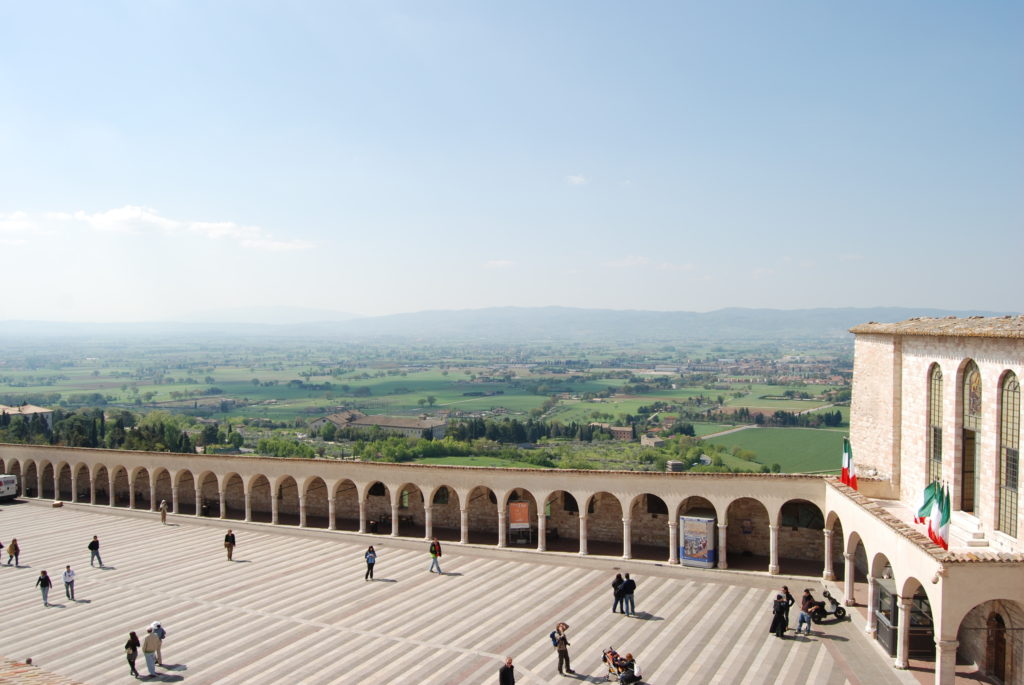
Summary of time in Assisi here.
My trip to Mexico in 2016 was the first time I had travelled internationally with friends. We dubbed our trip Señor Week – a play on Senior Week, when graduating high school students spend a week at the beach before heading their separate ways for college and work. But instead of separating, this was our way of coming back together after our Sophomore year of college. I had just completed my first college internship, and this was my reward for taking the first step into the adult working world.
Our Southwest flight to Cancun had perhaps the most exciting landing I’ve experienced. Uneven winds close to the runway precipitated a swift plummet of the airplane, before it stabilized again over the verdant rainforest. The woman next to me let out a scared yelp, but we had a good laugh about it when we were safely on the ground.
Cancun was on the itinerary for the trip, but it had to wait for a later date. We said “see you soon” to Cancun, and took our first of two buses. The destination was Tulum, with a layover in Playa del Carmen. The bus terminal in Playa del Carmen provided the first indication that things work a bit differently here than at home. While we were waiting for our next bus at the terminal, two police officers walked in. They were both heavily armed with military grade weapons and armor. The officers walked over to the ATM, where one took a knee and opened up the ATM as the other stood guard. After a couple minutes, the police had emptied the ATM of its contents and walked out of the terminal. Certainly not something you’d see in the US.
We then boarded the Mercedes bus and watched Hancock in Spanish as we drove to Tulum.
Tulum
Since we were college students on a budget, there were no gleaming resorts during our stay. Instead, we stayed at hostels in both Tulum and Cancun. Our hostel in Tulum was the bright, colorful, and friendly Mama’s Home. José was incredibly welcoming and knowledgeable. He taught us valuable information as soon as we arrived, including how much to pay for a taxi and where the best restaurants in Tulum were. The first breakfast I had at Mama’s Home, which was a breakfast quesadilla, was the best food I had in all of Mexico. Not bad for a place that cost $10/night for each of us. I would have paid $10 for that breakfast alone! This combination of factors is probably why Mama’s Home was named the Best Hostel in North America by HostelWorld in 2016. However, even the Best Hostel in North America can’t overcome the ancient septic architecture in Quintana Roo (the state that is home to both Tulum and Cancun). The septic system in the state is not strong enough to handle flushed toilet paper. Instead, it gets deposited in a bin next to the toilet. Luckily, the travel and local food (which consisted of shockingly little vegetables) kept us clogged up for the first couple days.

The ancient city of Tulum was a Mayan settlement which was at its peak between the 13th and 15th centuries before being abandoned by the end of the 16th century following the Spanish conquest of Mexico. The ruins of the city still sit proudly, overlooking the aquamarine surf of the Atlantic Ocean on the southern coast of the Yucatan Peninsula, just like they did 600 years ago in their prime. The picturesque Temple of the God of the Wind, shown in the picture below, remains my first mental image when I think back to this vacation.
The beach below the ruins is a public access beach, and it was full of people enjoying the weather. The beach was also full of enterprising locals trying to make some money. A man came up to us offering spots on his boat for a quick snorkeling expedition out on the water. He had filled a couple spots, but didn’t want to head out until he had a fuller boat. We declined, but when he returned he was more desperate and we were able to negotiate a price of 100 pesos per head. The exchange rate at the time was approximately 18 pesos per dollar, so we snorkeled in the crystal clear water for only slightly more than $5 per person. Being on the water also gave us a fresh perspective of the ruins. Everything was quieter on the water, and it almost felt as if we had been transported back several centuries and were the first to witness these great ruins since the Mayans had deserted the city.
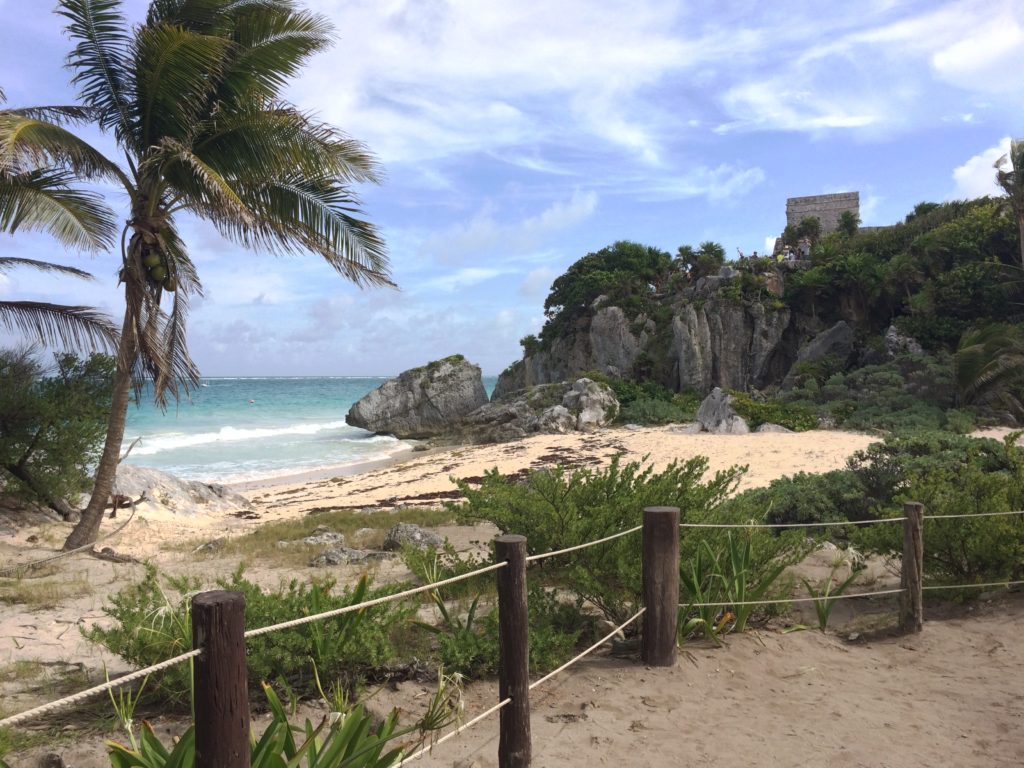
Outside of the ruins, Tulum has one of the nicest beaches in all of Mexico. Our beach day started with some bad luck that quickly turned to great luck. Outside of Mama’s Home, we boarded a small shuttle bus to take us to the beach. Since we weren’t staying at a resort, we were limited to the public beach. However, the bus driver drove past the stop and dropped us off in the middle of the resort area and told us we’d have to walk back the way we came to the public beach. After walking for mere minutes, a man popped out from the side of the road and ushered us into one of the resort beach access areas. When we made it to the end of the path and saw the beach in front of us, we became acutely aware of the stroke of luck we had just received. Later, when we boarded the shuttle again and drove past the public beach, we saw that it was a small, crowded area, separated from the road only by an ominous looking fence that may have even had barbs on it.
The beach was quiet and serene. The sky was a deep blue, dotted with clouds that appeared to be painted on with oil paints. I’m not sure I’ve seen the sky look quite the same since. The beach on Tulum was my first experience with white sand, and it immediately changed my views on sand. The sand we have here in the mid-Atlantic is coarse and burns your feet in the hot sun. White sand is soft, pillowy, and absorbs the heat instead of transferring it right back into your feet. Due to the privacy of the Tulum beach and the resort atmosphere, the beach at Tulum even bested the more famous Cancun beach.

Coba and Chichén Itzá
Tulum is excellently located on the Yucatán peninsula for travelling to Mayan ruins. We spent a day travelling to two historic sites. Our first stop was Coba. Coba is an ancient Mayan city located less than an hour away from Tulum by car. The most popular attraction at Coba is the Ixmoja Pyramid. Ixmoja is 138 feet tall. Climbing the steep steps is no easy task, as evidenced by the rope that runs the length of the pyramid for tourists to hang onto as they climb. The top of the pyramid offers an expansive 180 degree view that towers over the rainforest.
The site also includes a residential section, which contains a handful of ancient residences. The first thing I noticed was the size of the doorways: they were tiny. The residents of Coba must have been less than 5 feet tall on average.

Our next stop of the day was Chichén Itzá – the most recognizable historic site in all of Mexico. The ancient city became a regional capital in the 10th century, but went into a state of decline before the start of the 12th century, though the area was still heavily populated when the Spanish arrived 400 years later. The Temple of Kukulcán, the famous Mayan pyramid, was completed construction by 1000 AD. The pyramid burst into the Western consciousness in the 1840s after an exploration by American explorer John Lloyd Stephens. At this point, the pyramid was covered in vegetation, and looked nothing like the stately pyramid we see today. In fact, the pyramid was not excavated at all until 1923, and what we see today has undergone significant restoration.
The construction of the pyramid is very clever, and speaks to a level of sophistication that modern humanity is hesitant to attribute to ancient peoples. If you clap your hands near the pyramid, your ears are met with the chirps of the quetzal bird. Researchers believe that this echo is not incidental; instead, it was an intentional feature of the pyramid’s construction. Eac side of the pyramid has 91 steps. This adds up to 365, when including the temple on top, equaling the number of days in the Mayan calendar (as well as the modern calendar).
Chichén Itzá is more than just the Temple of Kukulcán. The ancient city includes numerous temples, a court for the violent Maya Ballgame, and four cenotes, including the famous Cenote Sagrado (Sacred Cenote). Humans were sacrificed into the Cenote Sagrado to the rain god, Chaac.
Although I had a great time at Chichén Itzá, I do have one gripe: the site is overrun with vendors selling cheap trinkets. The trinkets are also not unique. It felt as though every three stalls was selling identical souvenirs. The atmosphere of these stalls felt irreverent to the sacred site. Luckily, none of the stalls were allowed too close to each of the temples.

Cenotes
Add details here.



Cancun
Add details here.

Niagara Falls
Add details here

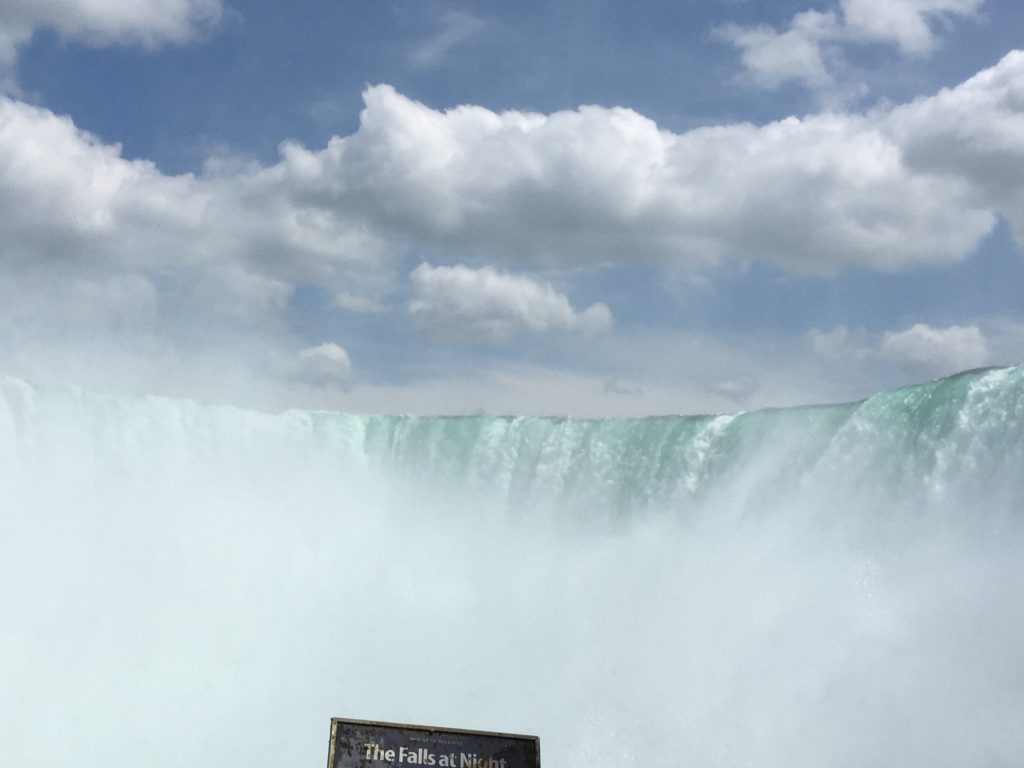

Toronto
Add details here
Nevada
Las Vegas
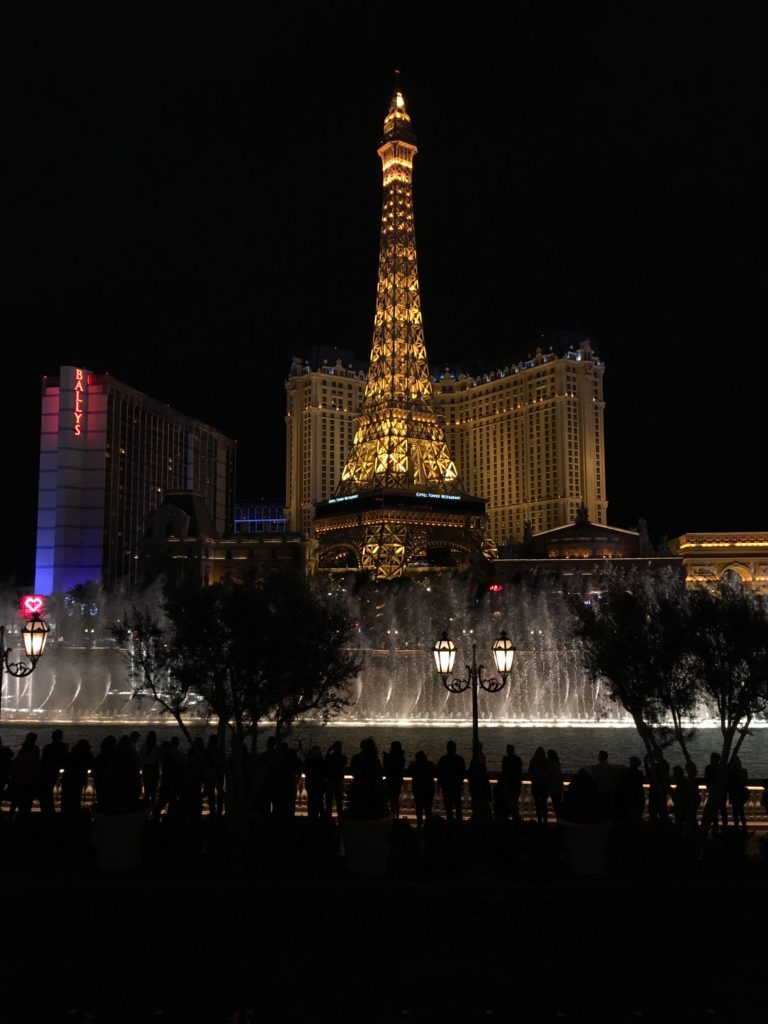
Add details here
Gold Strike Hot Springs
Add details here
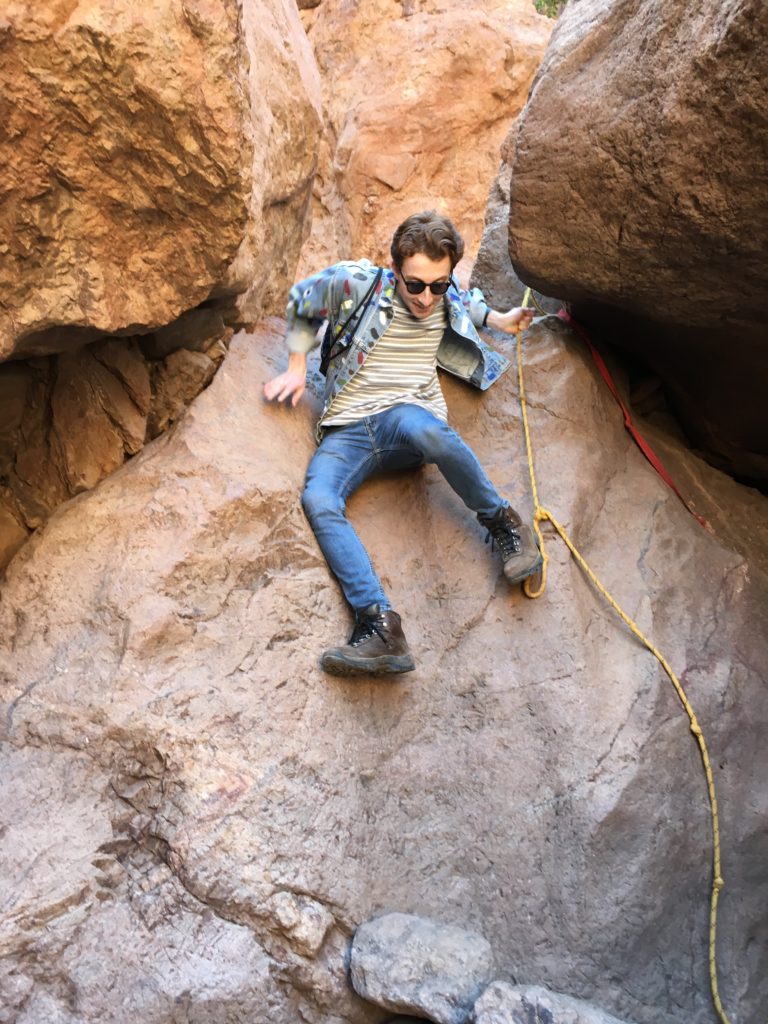

Utah – Zion National Park
Subway
Add details here
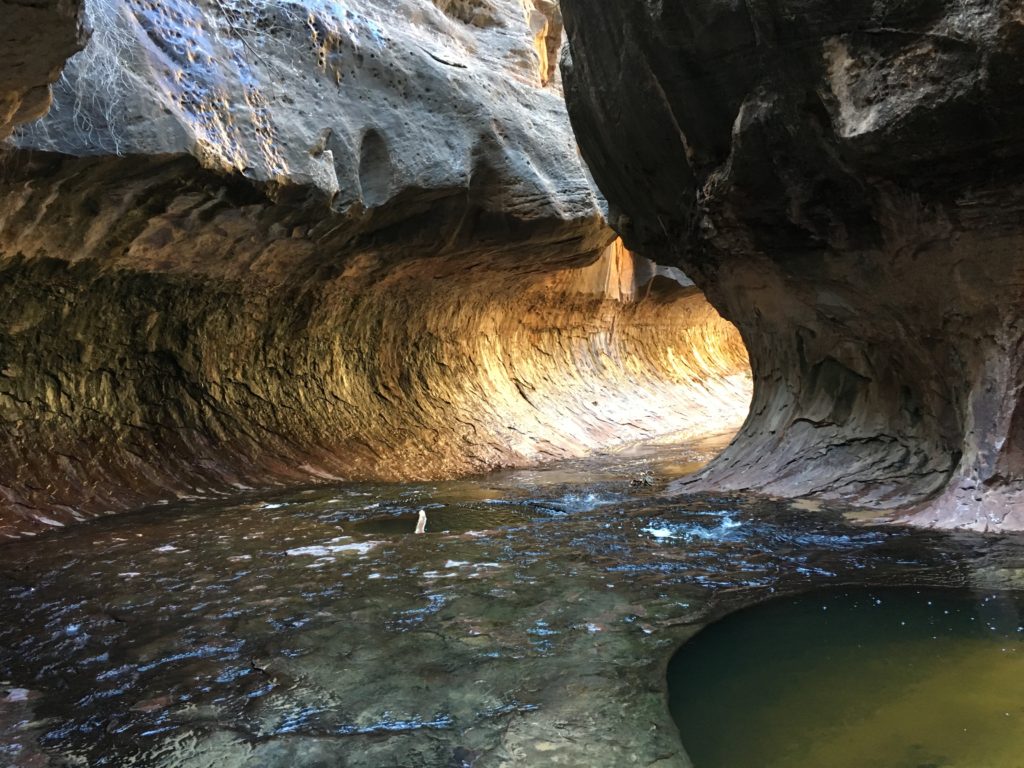
Angel’s Landing
Add details here



Arizona
Grand Canyon


Dublin
Add details here

Cliffs of Moher
Add details here


Galway
Add details here
Small Towns
Add details here
Beaches
Add details here


When your friend is getting his Master’s degree in London, you have no choice but to visit the UK! We chose to visit during UMD’s week-long spring break, but I couldn’t pass up the opportunity to fly over a couple days early to experience Scotland.
Edinburgh
Although I flew over a couple days early, I didn’t have the forethought to fly directly to Edinburgh, so a long train ride from London was on the docket for day one. The train ride was long, but the idyllic countryside and quaint British towns helped the time go by. It was fascinating hearing the accents change along the ride: proper London accents gave way to blue collar Midlands accents, before finally settling on a light Scottish accent as we pulled into Edinburgh.
The Edinburgh Waverly train station is located directly in the center of the Old Town and the New Town. The New Town is a master work of modern (by European standards) urban planning, but the Old Town beckons you over with it’s dark, medieval architecture. It has a story to tell.
After unwittingly walking past it multiple times, we checked into our AirBnB at New Assembly Close. A Close is the Scottish name for an alleyway, where the city’s lower classes lived hundreds of years ago. More on this in a bit. We spent the first night walking the Royal Mile (a mile-long road that begins at Edinburgh Castle and ends at the Palace of Holyroodhouse), admiring the architecture, which was simultaneously foreboding and welcoming.
The following day, we arrived at Edinburgh Castle at opening, the best time to attend since crowds are lighter. Statues of Robert the Bruce and William Wallace greet you as you enter the castle. Edinburgh Castle doubles as a museum of Scottish history, and even traces the Scottish monarch all the way back to King Arthur! It’s also the windiest place I’ve ever been. Edinburgh castle sits perched atop an ancient volcano, looking out over the city it has protected for nearly one thousand years. It offers excellent views of the city from its outer walls.
After departing the castle, the next stop was to Arthur’s Seat. Arthur’s Seat is yet another extinct volcano, which looks down on the entire city. The hike to its peak isn’t difficult, but a good pair of shoes is recommended. When you reach the peak, you are rewarded with an incredible view of Old Town Edinburgh, with Edinburgh Castle towering above the city. While we were descending Arthur’s Seat, it started to hail. Which brings me to my next point: Edinburgh has the craziest weather of anywhere I’ve visited! In one day, we experienced sun, rain, sleet, hail, and snow. Amazingly, this all happened between 40 and 50 degrees Fahrenheit.


Before grabbing dinner, we made our way to Calton Hill, which is the site of the unfinished Scottish National monument, which was built in the Classical Greek style. The monument was built as a tribute to Scottish soldiers who perished during the Napoleonic Wars, but was left unfinished after funds ran out in 1829. Although this led to disgrace and criticism at the time, I find that the unfinished nature of the project provides nice parallels to ancient Greek ruins in Athens. The monument in the photo below is the Dugald Stewart Monument, a tribute to the Scottish philosopher who lived from 1753 to 1828.
The last stop of the night was the Real Mary King’s Close tour. This tour takes you underground to a preserved close, which looks exactly as it did hundreds of years ago when it was inhabited by the city’s lower class. Although the close is now underground, the lighting is similar to what it would have been when the close was fully inhabited; the streets were so narrow that the sun did not reach the ground from behind the tall buildings. The darkness of the street made it dangerous even during the day. Things got even worse when the Bubonic Plague ran rampant in Europe. Stuck in such close quarters, many of Edinburgh’s poorest residents didn’t stand a chance against the plague. The tour does a good job of setting a somber, yet educational atmosphere. I’ve retained more information from this tour than any other we had in the UK and highly recommend to anyone visiting Edinburgh!

Before departing Edinburgh, we took a self guided tour of the Palace of Holyroodhouse. Holyrood is the official residence of the royal family in Scotland and has been since the 16th century. The palace grounds also contain the ruins of the Holyrood Abbey, which was founded in 1128 by King David I and predates the place by more than three centuries.
London
Our first full day in London began with a trip to Camden market after a walk along Regent’s Canal. In Camden, it struck me how the liveliness of the market and its surrounding areas felt like the middle of the city, even though it’s closer to the edge of the city than the center. I had this feeling in multiple places in London. To me, this is the incredible thing about London. It’s an absolutely massive city with endless things to do. This is what makes it one of the premier cities in the entire world.
Our first full day in London happened to coincide with St. Patrick’s Day. England’s rocky, to put it lightly, history with Ireland did not stop London’s residents from meeting up at Trafalgar Square to celebrate. I have yet to be in a place as crowded as Trafalgar Square was that day.



Stonehenge
Add details here

Bath
Add details here

White Cliffs of Dover
Add details here
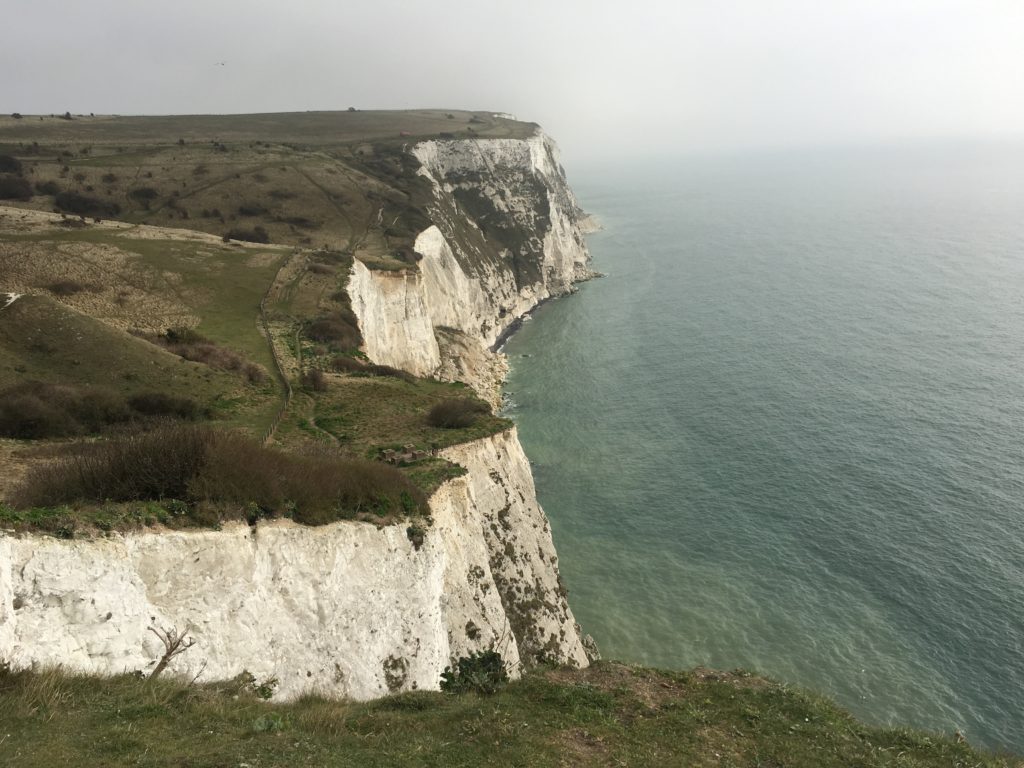

Oxford
Add details here
Blenheim
Add details here
Barcelona
![]()
![]()
 Add details here
Add details here![]()
![]()
Montserrat
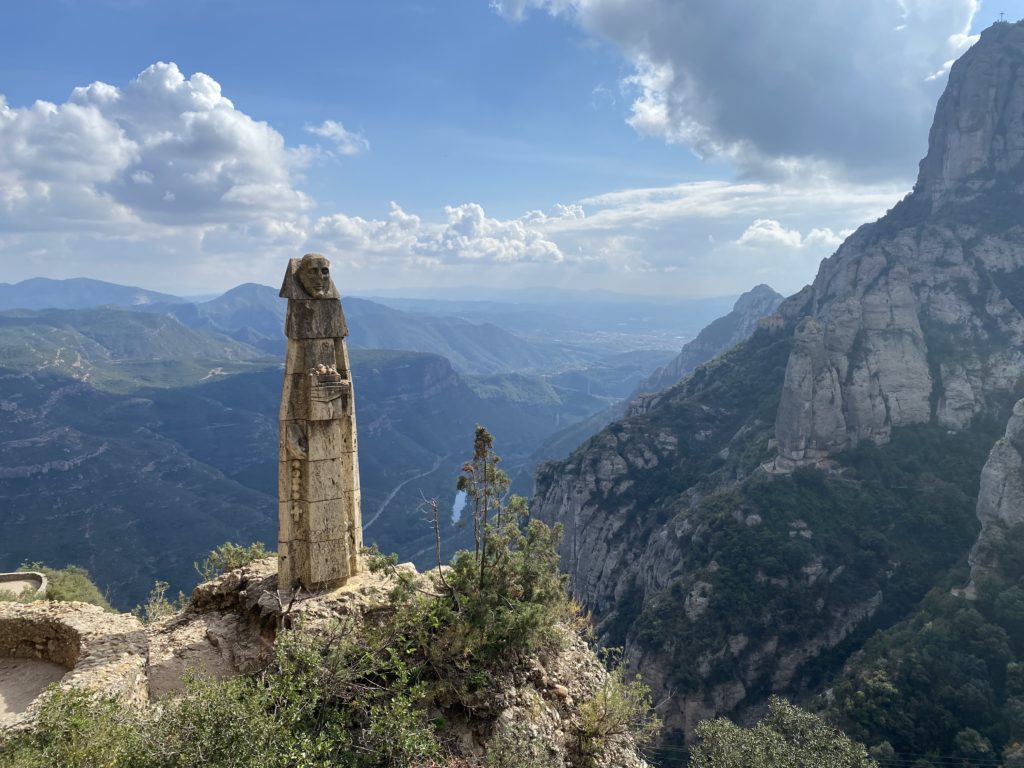 Add details here
Add details here
Madrid

 Add details here
Add details here
Ronda
 Add details here
Add details here
Granada
 Add details here
Add details here
Death Valley
Add details here
Red Rock Canyon
Add details here
I typically wouldn’t return to a country so soon after I had previously been there (just three years prior), but I was planning a European vacation with little notice and wanted to visit an English-speaking county. Plus, I had only visited Edinburgh previously, so there was still an entire country to see! What was initially planned as a solo trip turned into a group vacation as Mikey and Nate joined me after I threw out the idea with no expectations of any takers!
Itinerary
Day 1:
Arrive at Edinburgh Airport
Bus to Glasgow
Spend day in Glasgow
Day 2:
Spend morning in Glasgow
Pick up rental car
Glencoe – Lost Valley Hike
Glenfinnan Viaduct (Hogwarts Express)
Spend night in Portree
Day 3:
The Fairy Glen
Quiraing
Kilt Rock and Mealt Falls
Rubha nam Braitharean
Old Man of Storr
Day 4:
Fairy Pools
Dunvegan Castle
Duirinish
Drive to Inverness
Day 5:
Loch Ness boat tour
Culloden Battlefield
Foulis Castle
Day 6:
Drive to Edinburgh
Palace of Holyroodhouse
Arthur’s Seat
Holyrood Distillery
Dinner at Whiski Rooms
The Real Mary King’s Close Tour
Day 7:
Edinburgh Castle
Calton Hill
The Meadows
University of Edinburgh
Day 1
After luxuriating in my first experience with airport lounges, we boarded the plane at Dulles and arrived at Edinburgh airport the following morning. We were armed with Scot Rail passes, but after realizing how far away the airport was from the train station, we decided not to give in to the sunk cost fallacy, and instead boarded a bus to Glasgow directly from the airport. I used this bus ride as an opportunity to scout out driving in Scotland before having to get behind the wheel the next day. But after about ten minutes the jet lag took over, and I slept the rest of the way to Glasgow.
No offense to Glasgow, but one of the reasons I chose it as our first destination after our flight was because I was more interested in our other destinations and wasn’t too bothered by the prospect of a short day and a good night’s sleep. After visiting Glasgow, I stand by my planning. I certainly didn’t hate my time in Glasgow by any means, but it’s more of a functional, blue-collar city rather than a cultural or architectural Mecca.
In fairness, Glasgow wasn’t able to shine its brightest due to the ongoing bin strike in Scotland. In response to low wages for bin workers and skyrocketing energy prices, the bin workers hadn’t collected the trash in 10 days when we arrived in Glasgow. George Square, Glasgow’s historic central square, had heaps of trash bags scattered throughout.

Prior to visiting George Square, we took an Uber to the Kelvingrove Art Gallery and Museum, a stately red brick building in Glasgow’s West End neighborhood. Kelvingrove’s exhibits included early 20th century Scottish artists and Scottish animals, both current and extinct.
Day 2
After a good night’s sleep, we visited the Glasgow Cathedral and Necropolis in the morning. Although the cathedral wasn’t open yet, the Necropolis provided a quiet and relaxing morning walk outside the hustle and bustle of the city. Green spaces are in short supply in Glasgow, so the trails by the cathedral were a welcome reprieve from the city concrete. The most prominent resident of the necropolis is John Knox, the 16th century theologian, who was the leader of Scotland’s Reformation and founder of the Presbyterian Church of Scotland.
The real adventure began right before departing Glasgow, at this Avis rental car building. I climbed into the driver’s seat on the right side of the car and got myself acquainted with the controls. I quickly found out that the most difficult part of driving in the UK isn’t staying on the left side, it’s not drifting left in your lane. Not being used to driving on the right side of the car, I scraped a few curbs on the left side of the car on the first day. Driving by Loch Lomond was particularly nerve wracking, as the street was wedged between the lock on one side and a rocky hill on the other side. Large trucks came flying down the road mere feet from our car. It wasn’t the most relaxing drive, but we emerged from Loch Lomond unscathed.
The first stop in the rental car was the Lost Valley Hike in Glencoe. Glencoe was the site of a massacre in 1692, when more than 30 members of Clan MacDonald were murdered by Scottish government forces after swearing an oath of loyalty to the monarchs William III and Mary II too late. You would never guessed that something so grizzly had occurred in such a peaceful and idyllic setting. Glencoe is home to green mountains, and luckily for us when we were there, deep blue skies. The Lost Valley hike takes you from the parking lot, up between two mountains, following a river trail. After emerging from the woods, the views open up as you emerge into a valley, blockaded by mountains on three sides.

After departing Glencoe, a stop at Glenfinnan Viaduct was in order before driving to our AirBnB in Portree. Glenfinnan Viaduct is famous for being the setting of the Hogwarts Express overhead shots in Harry Potter. But after arriving at the viaduct, I think it deserves more credit for its absolutely breathtaking scenery. We had to wait about half an hour for the train to arrive, but I had no issues relaxing in the fields of purple flowers, dancing in the circular breeze flowing around the valley, with Loch Shiel glistening in the background in the evening sun. The train traversed the viaduct with its trademark steam clouds trailing the engine. The conductor knew what the people wanted, and blew his horn as he passed.

To break up our long drive from Glenfinnan to Portree, we stopped at Emily’s Byre for some Indian food. It was dark soon after we left, and once we crossed the bridge into Portree, I was tailed by a police officer for half an hour on my first ever day of driving on the left side of the road! It was nerve wracking, but kept me on high alert. We finally pulled into the AirBnB driveway after 10pm.
Day 3

The Fairy Glen was just the first stop in a jam-packed day of hiking. Next up was the Quiraing, which ended up being my favorite of all the hikes we did. The Quiraing is a very slow moving landslide, resulting in a valley between where the ground has fallen away. The name Quiraing comes from the Old Norse Kvì Rand, meaning “Round Fold”. The hike requires either a steep ascent to begin or a steep descent to finish. We elected to go all in and begin with the steep ascent, which turned out to be much higher than it looked from the ground. We also all decided to pass on the hiking boots, which was a bad idea due to the semi-solid state of the ground. Our shoes routinely sunk into the squishy marsh as we hiked to the top. The peak of the Quiraing offered stunning views of the jagged landscape and the surrounding countryside.

We got back to our car just as our parking was set to expire and motored off to Kilt Rock and Mealt Falls. This viewpoint gave us some time to rest our legs from the morning hikes. Since Kilt Rock and Mealt Falls is just a viewpoint, tour buses filled the small parking lot and it took a while to wait for the best viewpoint to snap a picture. A bagpiper also took advantage of the touristy area to get collect some tips. It’s a nice view, so I wouldn’t discourage anyone from visiting, but it’s nothing more than a 15 minute stop. Minutes down the road was our next hike, Rubha nam Brathairean (“Brother’s Point”). This hike wasn’t obvious from the road, which makes it a much quieter experience than the places we had been to thus far. The trail takes you down through a sheep pasture to the coastline, which the trail follows all the way to the point. Once again, the marshy grass impeded our progress and we decided to turn back before hiking all the way to the end. We did meet some curious sheep though!

Before finishing out the day, we had one last stop to the most famous attraction on Skye: the Old Man of Storr. At several points during the first portion of the trek, I was worried that I had over-hiked my companions, but the promise of the views ahead reinvigorated us to climb all the way to the peak. And it was worth it! The view of the Old Man of Storr from the viewpoint was much better than it was from the ground, which was a partially obscured view. The viewpoint also overlooked the serene waters of the Atlantic. If we weren’t out of food and getting hungry, I could have enjoyed that view for quite a while.

After a long day and many miles hiked, we headed back into Portree for what we hoped would be a relaxing and filling dinner. Unfortunately, Portree didn’t hold up its end of the bargain. Due to severe staffing shortages, only a handful of restaurants were serving food, and we arrived too late to get a table. After wandering around the town for an hour in desperation, we finally resigned ourselves to the Chippie shop, which was out of fish. Our burgers took about 45 minutes to be served and were thin and leathery. As there was no indoor seating, we ate them on the ground while midges buzzed all around us. Not the perfect ending to an otherwise great day.
Day 1:
- Landed in Salt Lake and picked up the rental car (bright red Dodge Charger!)
- Checked into the Golden Eagle Inn and bought bear spray
- Jackson Lake Overlook
- Willow Flats Overlook
- Oxbow Bend

- Scared all of the birds away!
- American White Pelican
- Common Merganser
- Osprey
- Muskrat
- Vole
- Other Day 1 animals
- Elk
- Bison
- Pronghorn Antelope
Day 2
- Cascade Canyon hike
- Marmots! People thought they were groundhogs or beavers
- Great waterfalls

- Too much snow to continue too far into the hike
- Mormon Row

- Lots of old people. Not a ton to see, but got some good pictures of the barns.
- Moose-Wilson road
- Saw beavers on the water
- Saw two moose. The first moose had winter tick infestation, so he was missing a lot of fur.
- Saw a second moose (with all his fur). Accidentally turned on the camera flash from close range.
- New Day 2 animals
- Marmot
- Pika (not the inspiration for Pikachu, though they do look like him)
- Beaver
- Moose
- Last meal in Jackson 🙁
Day 3
- Taggart and Bradley Lake hike
- Much quieter than Cascade Canyon. Enjoyed the quiet lakes. Thought we might see a bear, but didn’t.
- Schwabacher Landing
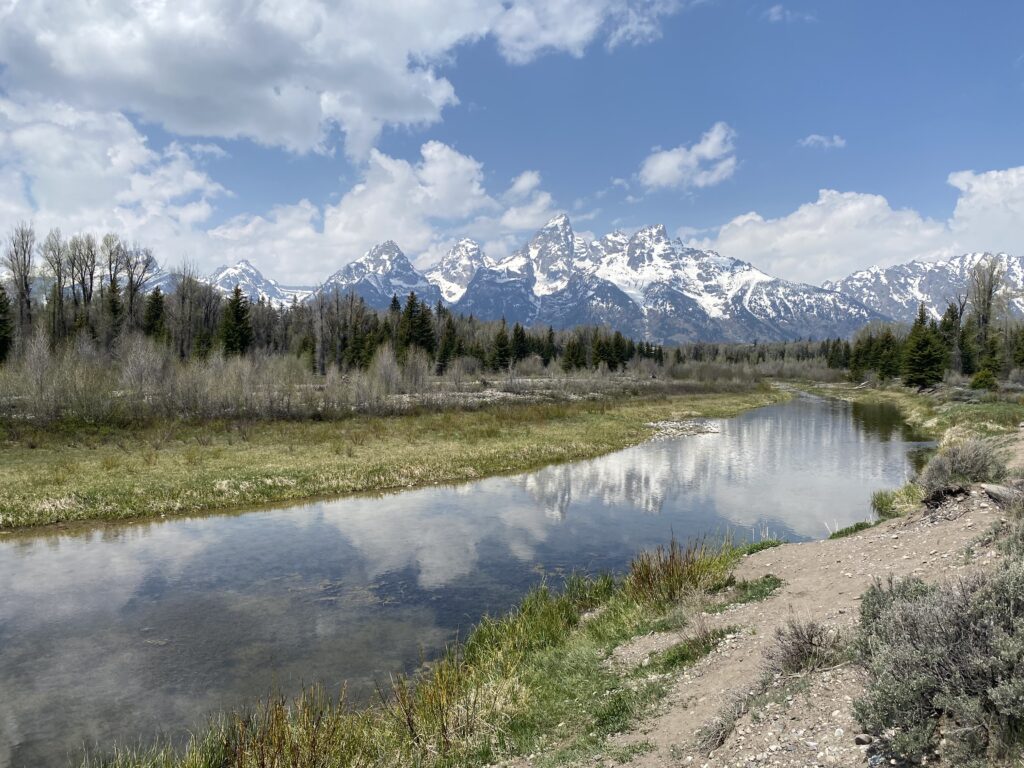
- Snake River Overlook
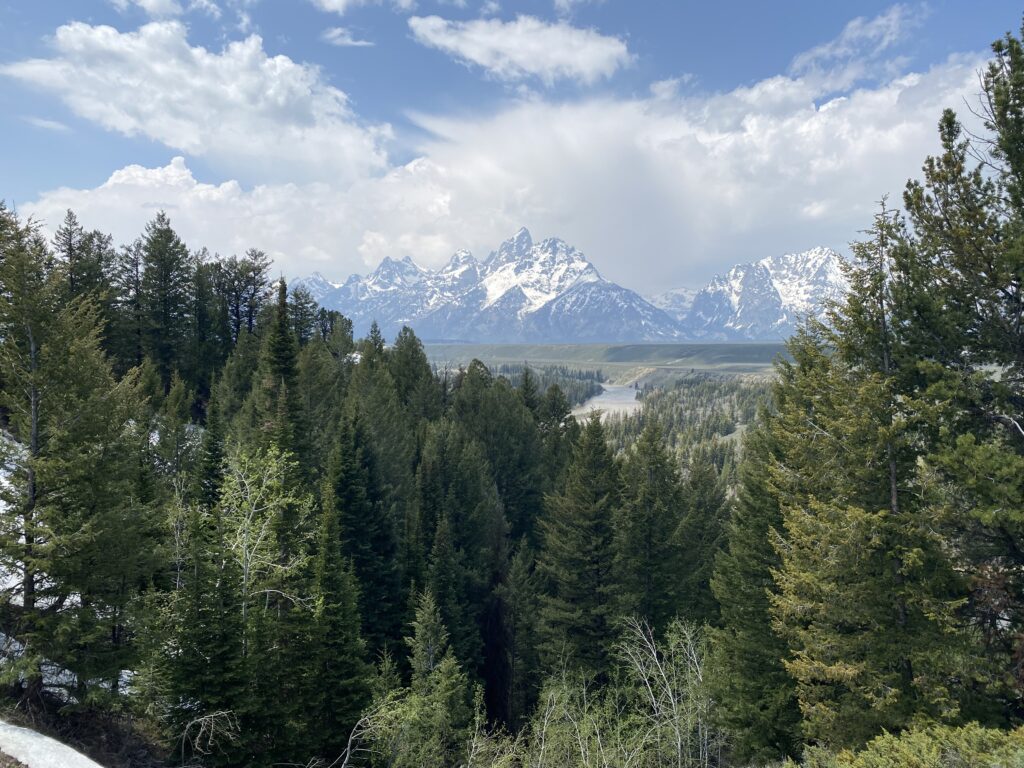
- Drove to Yellowstone
- Old Faithful

Sunset at Lamar Valley
- New Day 3 animals:
- Otter
- Mallard Duck
- Broad-Winged Hawk
- Raven
Day 4
- Old Faithful from above
- Walked the Upper Geyser Basin
- Visited Grand Prismatic Spring (the overlook trail was closed due to bear activity)
- Watched Grand Geyser erupt. Much more spectacular than Old Faithful!
- First bear sighting! Mama grizzly bear with cubs.
- Searching for animals in Lamar Valley
- New Day 4 animals:
- Grizzly Bear
- Coyote
Day 5
- Norris Geyser Basin
- Mammoth Hot Spring (overrated)
- Tower Fall
- Searching for animals in Lamar Valley

- New Day 5 animals:
- Black Bear
- Mountain Goat
- Sandhill Crane
- Snowshoe Hare
Day 6
- Wapiti, Clear Lake, Ribbon Lake, and South Rim Trail (4.7 miles)
- Trail took us to the south rim of the Grand Canyon of the Yellowstone
- West Thumb Geyser Basin
- Saw a Grizzly Bear and a Gray Wolf within 100 yards of each other!

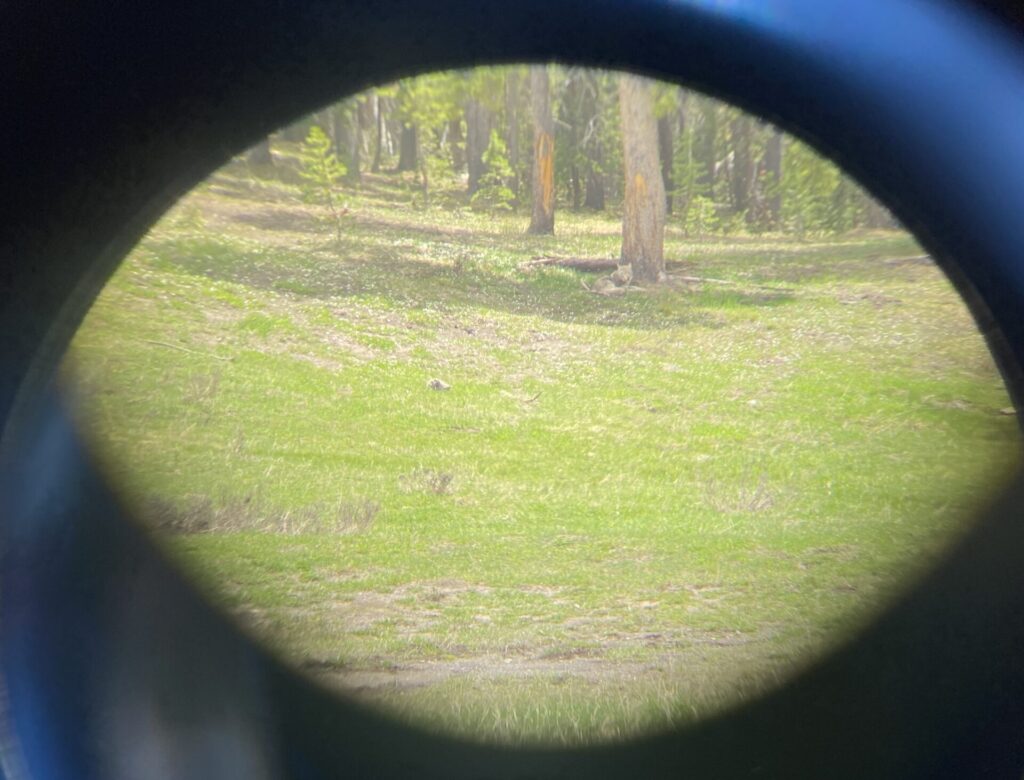
- New Day 6 animals:
- Gray Wolf
Day 7
- Searching for animals
- Saw a buffalo give birth (the calf was walking within 10 minutes!)
- Three gray wolf puppies. Too far away to get a picture.



